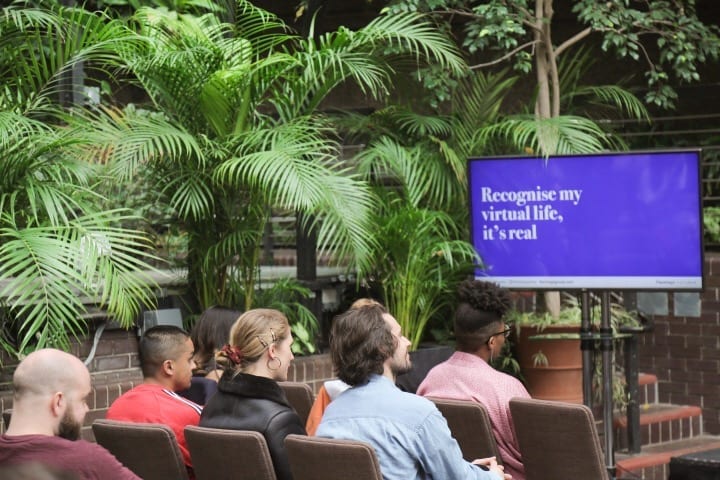|
Getting your Trinity Audio player ready...
|
Strategic insight consultancy Flamingo’s Futures team has created The Frame, a quarterly cultural trends report, to help clients navigate the constantly-shifting cultural landscape.
The Frame explores and explains trends with human truths at their heart, ensuring that they are usable, meaningful, and, most importantly, relevant. It explores 15 trends across categories including Values & Relationships, Media & Communications, Home & Lifestyle, Style & Beauty and Retail, Leisure & Experiences.
For those who missed the launch event in London, this feature outlines the key cultural trends publishers need to know.

The Media & Communications section of the first issue explores three core trends. The first of these is the rise of crowdsourced storytelling; this has been a part of the internet since the first fanfiction writers shared their stories online, but now major media producers are incorporating audience interaction and creativity into their gaming, movie and TV releases, and we’re seeing a new era of collective creativity going mainstream.
“The demand for shorter, episodic and curated content is growing as consumers seek interactive engagement and a ‘pick and mix’ approach to narratives, time commitment and economic models.”
The crowdsourced storytelling trend can be seen playing out on fiction writing platform Wattpad, which has a reader base of over 65m; these readers help brainstorm, develop and shape stories with chapter-by-chapter feedback. Wattpad has spawned hit movies and shows including Netflix’s romantic comedy The Kissing Booth (one of 2018’s most watched – and re-watched – pieces of content) and in 2019 is set to ‘professionalise’ its creators with the release of Wattpad Next, which allows readers to support writers directly by purchasing ‘Coins’ to unlock their stories.
Meanwhile, numerous moves are being made to increase the impact that people can have on the entertainment they consume; Netflix released its choose-your-own-ending hit Bandersnatch at the end of last year, and online games like Fortnite and PubG have popularised the model of a game as an ever-evolving experience; they allow creators to continue to tweak, upgrade and develop games based on real-time user feedback.
This trend has a number of implications for brands and business, and not only those operating within the media landscape. When you consider that businesses that involve customer communities see a 33% higher growth rate than their peers, it’s clear that crowdsourcing isn’t just a nice gesture; it’s commercially powerful.
“Building authentic collaboration into your media business model not only allows for more potent creative development, but forges links between businesses and community users.”
Another media-focused trend explored in The Frame is how advances in gaming have spurred the growth of virtual spaces to socialise, entertain, and trade virtual goods on a huge scale. For example, in February 2019, Fortnite hosted the largest ever virtual concert; a crowd of 10m users saw DJ Marshmello deliver a 10-minute set in the game’s Showtime mode.
Meanwhile Berlin start-up Staramba is an ultra-realistic virtual reality network where users can shop, network and share experiences. Features within the network are built around famous brands and celebrities; using an advanced 3D scanner, Staramba has transformed the likes of Usain Bolt and David Beckham into hyper-realistic VR avatars.
Similarly, online platform Decentraland’s Genesis City allows users to own a piece of virtual land that can be bought, sold or developed. Many users are looking to use the virtual space, accessible with a VR headset and web browser, as a space for online commerce. Last year, Decentraland recorded close to 39,000 transactions, with users spending up to $175,000 on virtual property.
The success of these approaches suggests that in 2019 we will see brands being forced to fundamentally rethink how their products and services are monetised and developed over time. Strategies focused around users’ needs will help create and sustain a strong base of loyal consumers; businesses should aim to be agile enough to respond to changing user preferences and follow the interests of fans as a means of identifying opportunities for long-term growth.
The final media trend explored in the first issue of The Frame is one that has seen demographic marketing become less relevant as people increasingly look to media brands to curate viewing that will put them in touch with their ‘global taste tribe’.
A sign of this trend is the fact that millennial murder satire YOU didn’t do well when it was first aired on reality TV channel Lifetime, where it was viewed as a genre piece aimed at female viewers looking for a lowbrow TV fix. But once it was taken on by Netflix, which is famous for its algorithmic curation, it turned into a global cult hit, discussed endlessly on social media and watched by 40m households in its first month (more than double the audience for the season finale of Game of Thrones).
Another sign of the importance of taste-based personalisation is the poor reception of YouTube’s Rewind 2018 video, which showed a host of YouTube stars in a light-hearted look back at moments that made the year. In excluding all the YouTube stars that have truly global appeal and lumping together stars that speak to totally different audiences, YouTube gave the impression of a virtual monoculture that spoke to everyone and no one at the same time, and subsequently alienated much of the community.
“With a growing demand for content to share, clip and reference online, media companies need to be able to get the right stuff in front of the right people without straying into over-personalised , ‘creepy’ territory.”
This means streaming media is ideally placed for psychographic marketing, as people seek emotional and intellectual stimulation in private. But getting the tone of this
Marketing in a way that appears ‘against type’ – disrupting demographic clichés or genre norms can be powerful when the objective is to drive conversation and encourage audiences to feel unique in their tastes.
The content of The Frame is built from the constant monitoring and analysis of cultural trends, layered on top of insight from the hundreds of global projects Flamingo’s people insight team carries out every year, and illustrated with analysis from Flamingo’s data science specialism, Digital Forensics. To learn more about The Frame, visit flamingogroup.com/theframe
Bronwen Morgan, Head of Content for Flamingo


